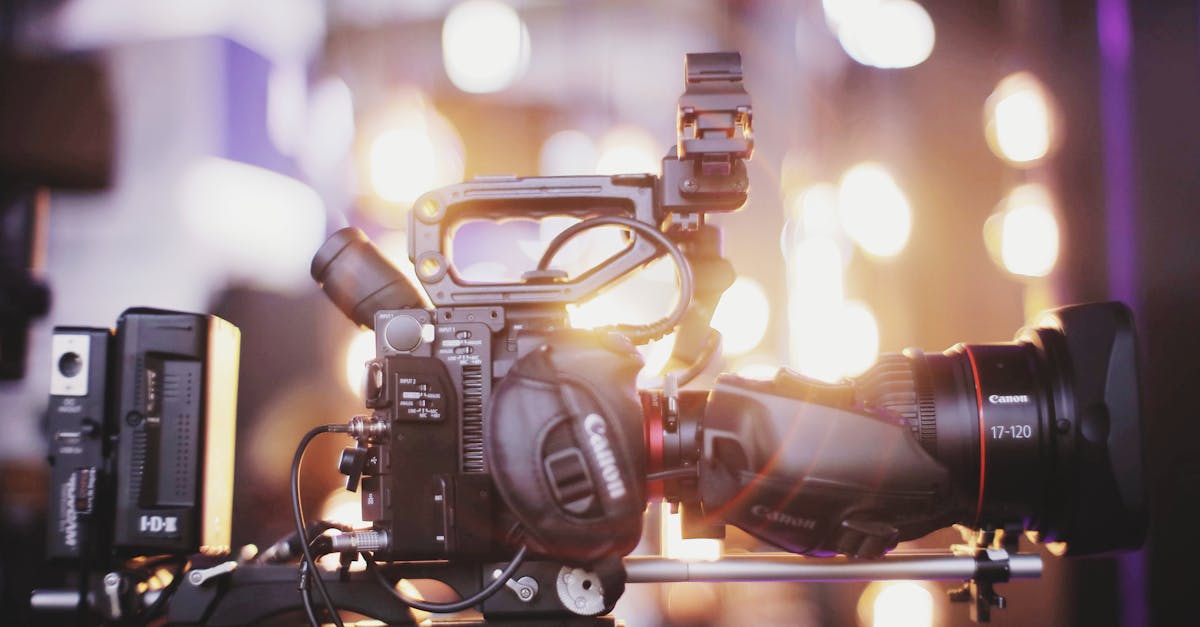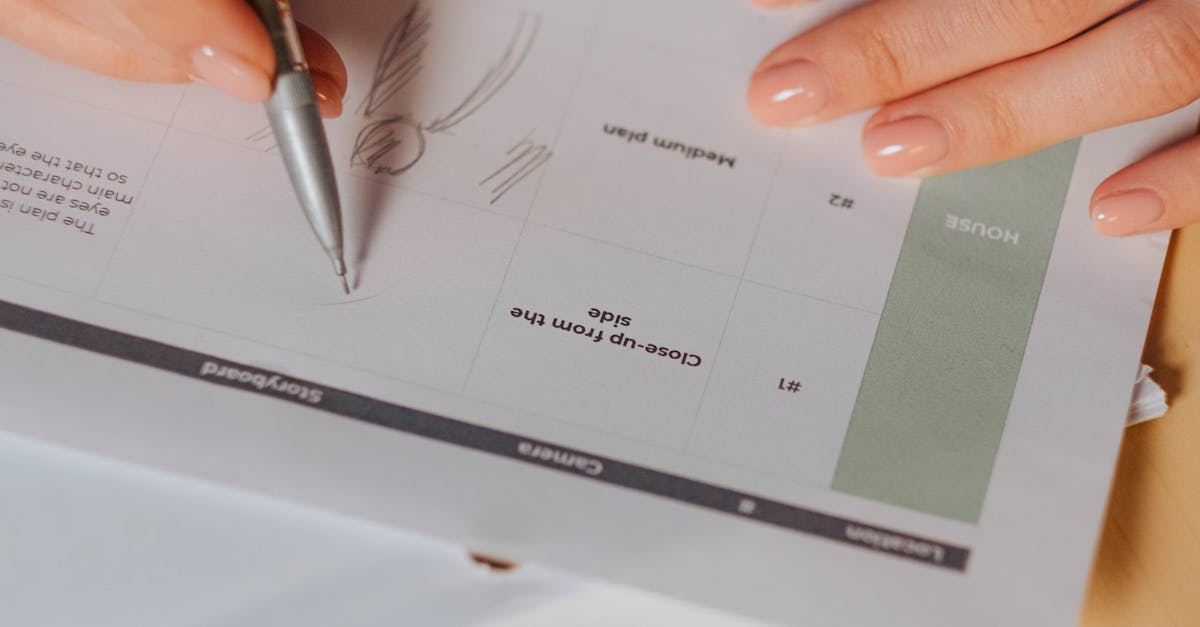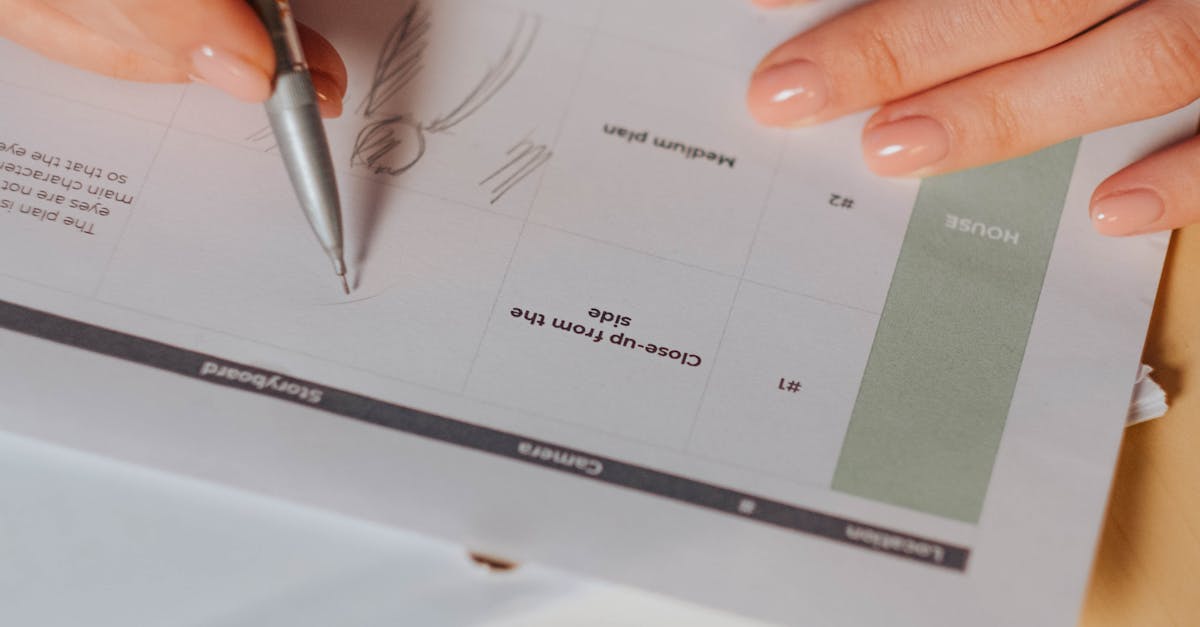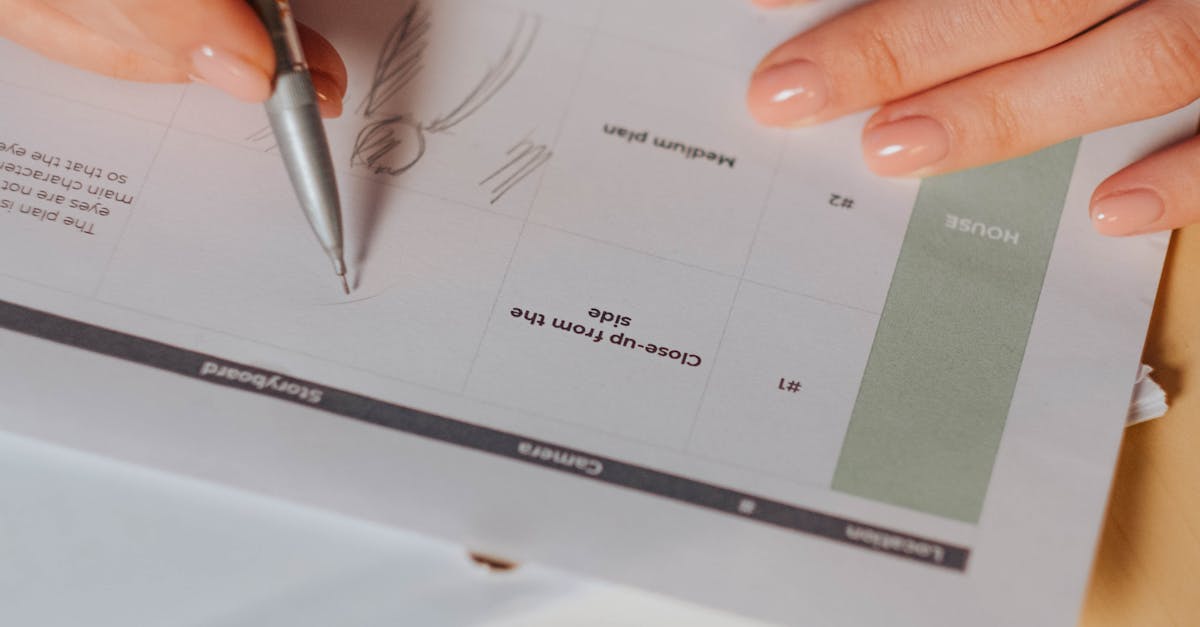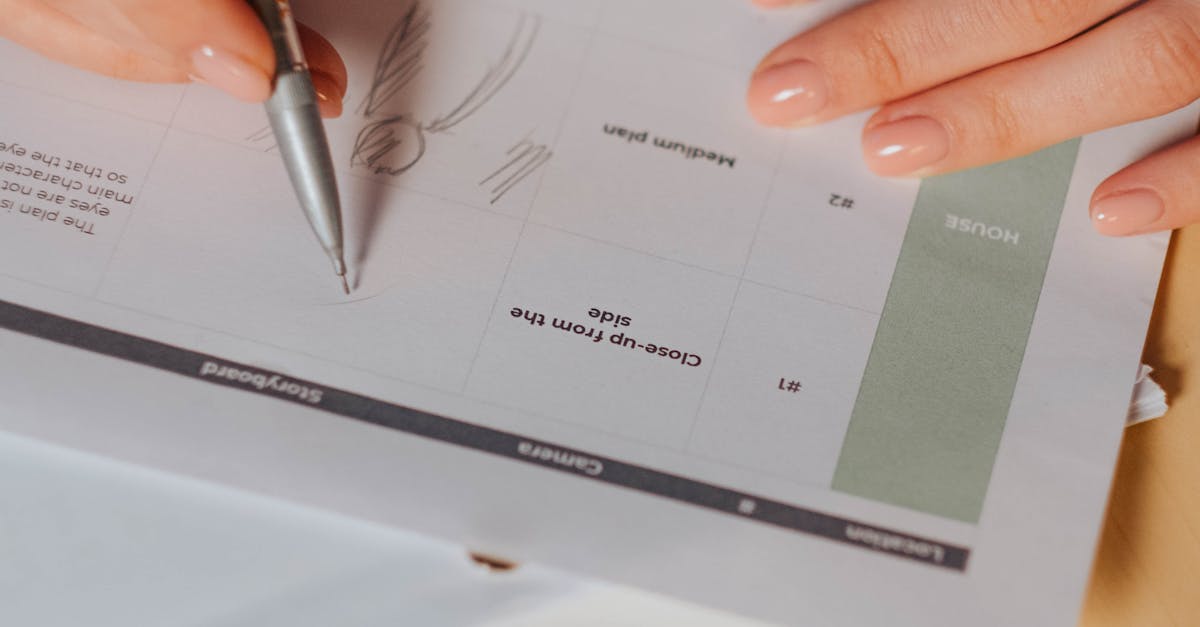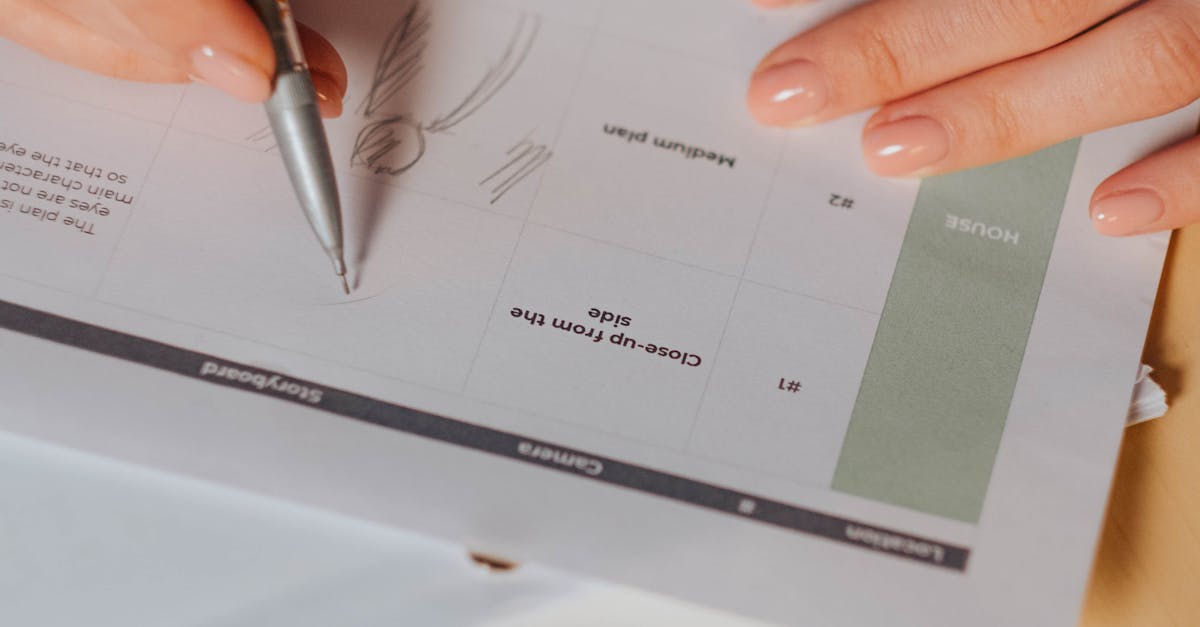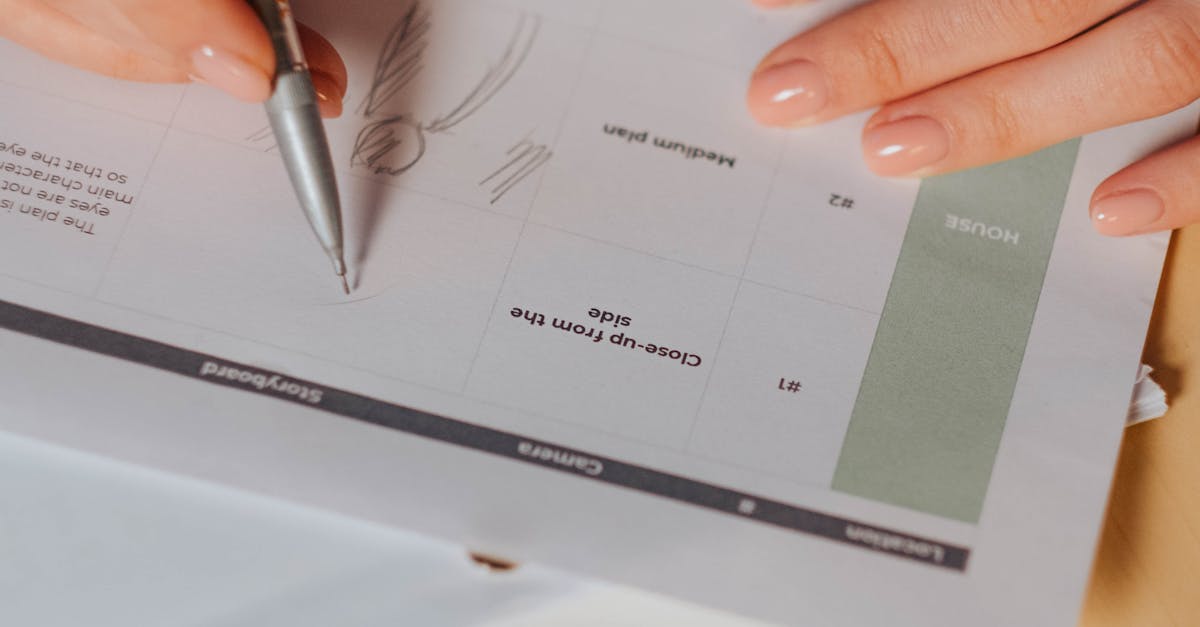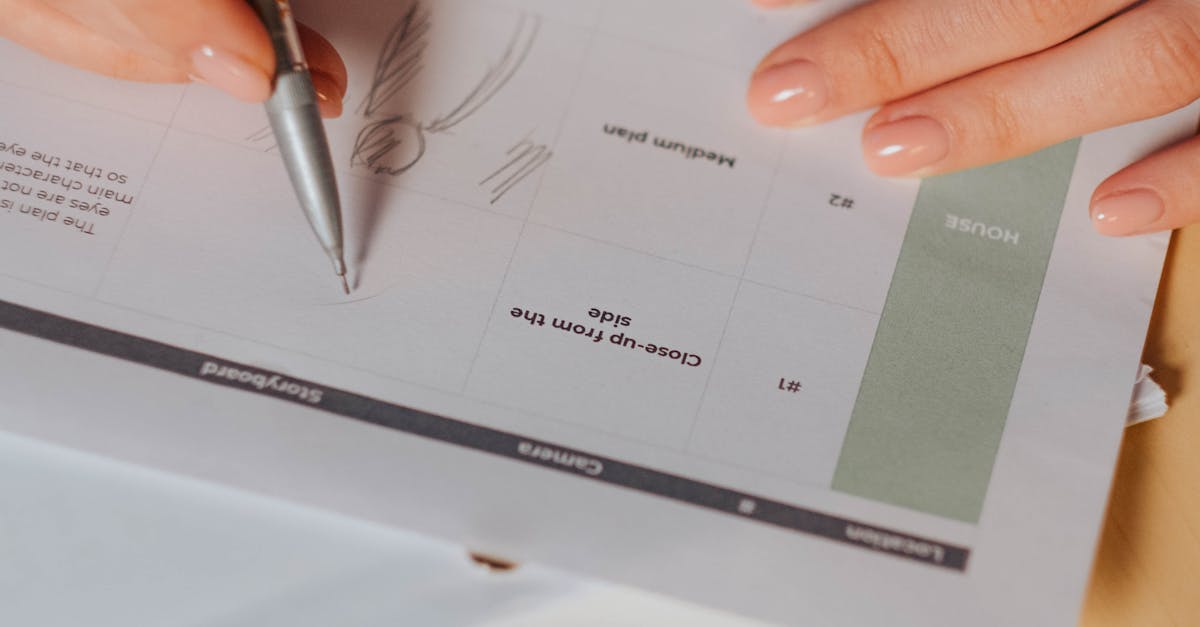
Table Of Contents
Incorporating Feedback
When it comes to the process of storyboarding, feedback plays a crucial role in ensuring the final product meets the intended objectives. In the context of Storyboarding Pickering, receiving feedback from stakeholders, team members, and clients provides valuable insights that can guide the direction of the project. It allows for adjustments to be made early on, helping to avoid potential issues during the later stages of production.
Incorporating feedback into the storyboard process is not just about making corrections; it is also an opportunity to brainstorm new ideas and approaches that can elevate the project to new heights. By actively seeking and integrating feedback, Storyboarding Pickering can foster a collaborative environment where different perspectives contribute to a more refined and impactful end product. This iterative process of receiving feedback, implementing changes, and seeking further input ultimately leads to a storyboard that is not only technically sound but also resonates with its intended audience.
Revisions and Adjustments
As part of the storyboard development process for "Storyboarding Ajax," revisions and adjustments play a crucial role in refining the visual narrative. Upon receiving feedback from stakeholders, creators must carefully analyze the comments to identify areas for improvement. This stage involves making necessary changes to ensure that the storyboard aligns with the project's vision and objectives. By incorporating feedback effectively, creators can enhance the overall quality of the storyboard and address any inconsistencies or gaps in the narrative flow.
Moreover, revisions and adjustments also involve fine-tuning the details within the storyboard to achieve visual coherence and storytelling clarity. This process may entail modifying scene transitions, adjusting character expressions, refining backgrounds, or resequencing storyboard panels. Through meticulous review and thoughtful adjustments, creators can elevate the storytelling impact of "Storyboarding Ajax" and ensure that the visual elements effectively communicate the intended message to the audience.
Colour and Visual Effects
Storyboarding Niagara would be incomplete without considering the significant role of colour and visual effects. Colour choice in a storyboard plays a crucial role in setting the tone and emotional atmosphere of the scenes depicted. By using a specific colour palette, storyboard artists can evoke certain moods or convey themes more effectively. Vibrant colours may suggest a sense of excitement or joy, while darker tones may create a feeling of suspense or danger. Visual effects, including techniques such as shading, lighting, and texture, add depth and dimension to the storyboard, making the visuals more compelling and engaging for the audience.
Incorporating a variety of visual effects can enhance the overall storytelling experience, making the storyboard more visually appealing and realistic. By paying attention to details such as shadows, highlights, and reflections, storyboard artists can bring their scenes to life and immerse viewers in the narrative. Whether it's using contrasting colours to highlight important elements or incorporating special effects to create a sense of movement or drama, the careful application of colour and visual effects can elevate the quality of a storyboard and captivate the audience's attention.
Adding Depth and Atmosphere
Adding depth and atmosphere to a storyboard is crucial in capturing the viewer's attention and immersing them in the story. In "Storyboarding Niagara," this can be achieved through the careful use of shading, lighting, and perspective. By incorporating varying degrees of light and shadow, the storyboard artist can create a sense of depth within each frame, making the scene feel more three-dimensional and engaging. Additionally, utilizing different perspectives, such as high angles or close-ups, can help to establish the mood and atmosphere of a particular scene, adding visual interest and emotional depth.
Furthermore, the inclusion of texture and details in each frame can enhance the overall atmosphere of the storyboard. By paying attention to small details like textures of surfaces, patterns, or objects in the background, the artist can create a more realistic and immersive experience for the viewer. Whether it's the rough texture of a brick wall or the intricate pattern of a character's clothing, these details help to ground the story in reality and make it more relatable to the audience. By focusing on these elements, "Storyboarding Niagara" can effectively convey the emotions and atmosphere intended for each scene, making the storyboard a powerful visual tool for storytelling and visualization.
Sound and Music Integration
Sound and music integration play a crucial role in enhancing the overall viewing experience of a storyboard. When creating a storyboard, selecting the right sound effects and music can significantly impact the mood, tone, and pacing of the visual narrative. The auditory elements in a storyboard can evoke emotions, guide the audience's attention, and create a more immersive experience for viewers. In the context of "Storyboarding Ajax," integrating sound and music effectively can elevate the storytelling and help convey the intended message more powerfully.
Moreover, sound and music integration in a storyboard can help establish a coherent and engaging atmosphere. By selecting appropriate audio cues and background music, creators can set the scene, reinforce key moments, and establish the desired ambiance for each frame. Consistent and strategic use of sound effects and music can ensure that the audience remains captivated throughout the storyboard, enhancing the overall impact and leaving a lasting impression. In the case of "Storyboarding Ajax," thoughtful integration of sound and music can bring the visual elements to life, making the narrative more compelling and memorable for the viewers.
Enhancing the Viewing Experience
When it comes to enhancing the viewing experience in a storyboard, there are several key factors to consider. Firstly, ensuring that the visual elements are engaging and cohesive is crucial. Consistency in the colour palette and visual effects can help create a more immersive and captivating story for the audience. By maintaining a harmonious visual style throughout the storyboard, viewers can more easily connect with the narrative and stay engaged in the storytelling process.
In addition to visual aspects, integrating sound and music effectively can significantly enhance the viewing experience. Sound effects and music can evoke emotions, set the mood, and create a more dynamic atmosphere for the storyboard. By carefully selecting and integrating appropriate sound elements, Storyboarding Niagara can elevate the overall impact of the narrative and leave a lasting impression on the audience.
FAQS
What is a storyboard?
A storyboard is a visual representation of a story that helps in planning and organizing the flow of a project, such as a film or animation.
What are the three main components of a storyboard?
The three main components of a storyboard are visuals, dialogue, and annotations. Visuals depict the scenes visually, dialogue includes the script or text spoken by characters, and annotations provide additional information or instructions.
Why is it important to include visuals in a storyboard?
Visuals in a storyboard help in illustrating the key scenes, actions, and emotions of the story, making it easier for the team to understand the sequence of events and visualize the final product.
How can annotations enhance a storyboard?
Annotations in a storyboard provide important details such as camera angles, transitions, special effects, and other technical aspects that help in conveying the director's vision and guiding the production team.
Can a storyboard be revised and adjusted during the production process?
Yes, a storyboard can be revised and adjusted as needed during the production process to accommodate changes, feedback, or new creative ideas that arise along the way.
